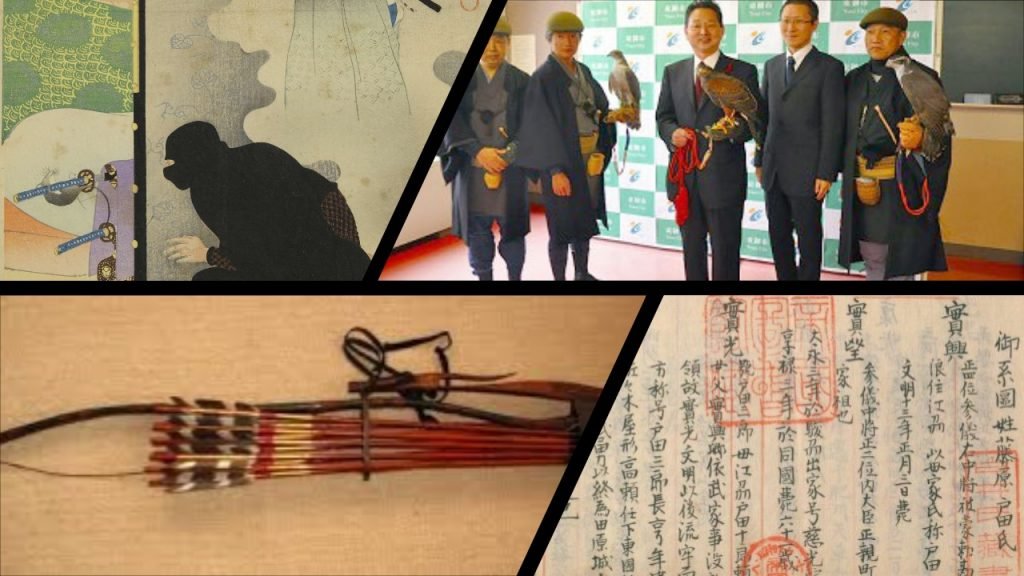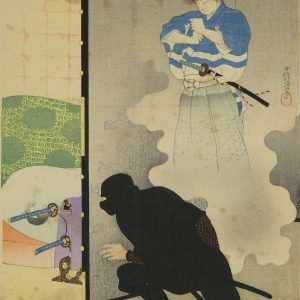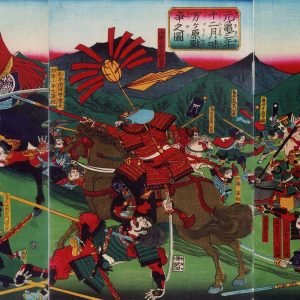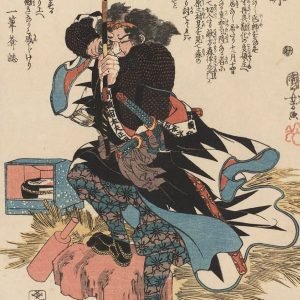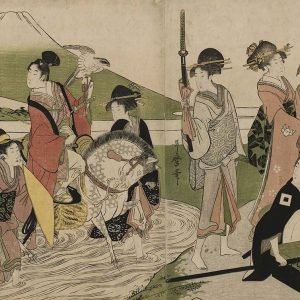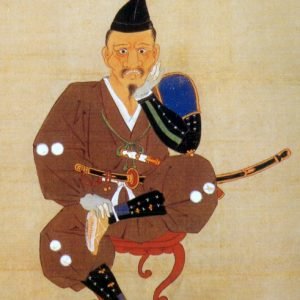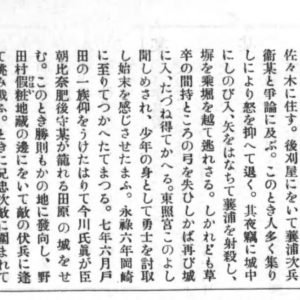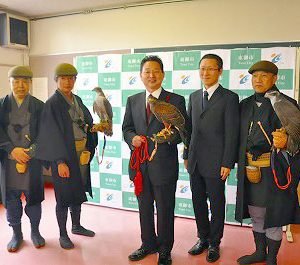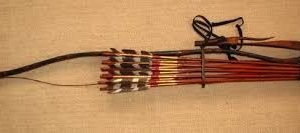Since my official announcement a few years ago, regarding the discovery of Toda Shinryuken’s true identity as Toda Hisajiro, I have pursued more research into his family and their traditions. This has led to numerous more discoveries and even more questions.
One question I am often asked is why Toda Hisajiro and his ancestors do not show up in the “official” Togakure Ryu lineage as laid out by Takamatsu Sensei in the mid 1900’s. The answer to that is very simple and Hatsumi Soke has said this on many occasions, it’s because Takamatsu Sensei changed the names of the Toda family members in the lineage to protect them. After all an ultra-secret organization of agents and spies is a serious thing. Hatsumi Soke has even stated this in an interview in a Japanese magazine before, So, to expect to find the names listed in the given history would produce no results. They are not names of actual people in history. But…the names Takamatsu Sensei did leave behind do produce many clues to find the real history, if you know where to look.
In Takamatsu Sensei’s stories, the man he is calling his maternal-grandfather, Toda Shinryuken Masamitsu, is most definitely Toda Hisajiro. The events in his life, the inter-relationship of his direct family members with the Kuki clan, the Hattori clan and the Matsudaira (Tokugawa) clan through adoptions and marriages, the family’s rule at Matsumoto castle with Mt. Togakushi nearby, and his role as sword instructor at the starting years of the Kobusho military academy all match up perfectly, like pieces in a puzzle that fall precisely into place. Even the tradition of falconry he represented, the Suwa-Ryū, was centralized at the Grand Shrine of Suwa and nearby Togakushi village. It is still practiced by a few dedicated individuals in Togakushi village to this day.
Falconry, as I have discussed in many of my previous posts, has a long history of being involved with ninjutsu. But their operatives were not called ninja, nor were they called shinobi. Takajō 鷹匠 or falconers that served the Tokugawa shogunate, like the Toda family, ran intelligence and covert operations with agents known as Torimi 鳥見. In fact, the Toda family was the most well known of the master falconers to serve the Shogun generation after generation. Their Torimi agents worked hand in hand with the Onmitsu 隠密 secret police and the Hattori clan to ensure the safety of the Shogun during his travels and his hunts. They were also given special “danger” pay for secret activities. The details and objectives can only be left up to our imaginations.
In an effort to clarify the truth about the Bujinkan histories, as many of you already know, I have taken on the project of a second Hidden Lineage book. This time expanding on the known history of the Gyokko school of martial arts. As the Gyokko school is considered the main system of the Toda family’s martial arts I think it is best to understand this school deeply first before looking at the others.
So, who are the true Toda family of the Bujinkan Martial Arts? Well here is a list of the Toda family lineage, from their clan founder Toda Munemitsu to Toda Hisajiro, our Shinryuken. Keep in mind this is just a list of the falconry related clan leaders, each of these men had several brothers and sisters, so the clan itself is quite large.
Tokugawa Shogunate Takajo Toda Clan (Branch of the Izumo Fujiwara)
Toda Munemitsu 戸田宗光 (b. ? ~ June 19, 1508)
(Sonshiro 孫四郎/Danjouzaemon 彈正左衛門)
Toda Norimitsu 戸田憲光 (b. ? ~ November 1, 1513)
(Jingoro 神五郎/Sonshiro 孫四郎)
Toda Masamitsu 戸田政光 (b. ? ~ August 27, 1548)
(Sonshiro 孫四郎/Sakon 左近)
Toda Tadamasa 戸田忠政 (b. ? ~ d. ?)
(Shozaemon 庄左エ門)
Toda Katsunori 戸田勝則 (1534 – June 5, 1620)
(Kuemon 九右衛門/Kuhei 九平)
Toda Yoshihisa 戸田吉久 (b. ? ~ September 3, 1609)
(Kuemon 九右衛門)
Toda Sadayoshi 戸田貞吉 (b. ? ~ October 14, 1652)
(Hisasuke 久助)
Toda Yoshinari 戸田吉成 (b. ? ~ January 2, 1651)
(Shirouemon 四郎右衛門/Shichirouemon 七郎右衛門)
Toda Masayoshi 戸田正吉 (b. ? ~ December 24, 1679)
(Shichinosuke 七之助)
Toda Kachifusa 戸田勝房 (b. ? ~d?)
(Asanosuke浅之助/Shichinosuke七之助/Jirouemon次郎右衛門/Gosuk五助)
Toda Katsuyori戸田勝便 (b. ? ~ November 14, 1781)
(Matsujiro 松次郎/Hisasuke 久助/Gosuke 五助)
Toda Katsuchika戸田勝愛 (b. ? ~ August 12, 1796)
(Hisajiro 久次郎/Gosuke 五助/Hisasuke 久助)
Toda Katsuteru戸田勝英 (b. ? ~d?)
(Hisasaburo 久三郎/Hisajiro 久次郎/Gosuke 五助)
Toda (Real name unknown) 戸田?? (b. ? ~d?)
(Hisajiro 久次郎/Wasaburo 和三郎/Shinryuken 真龍軒)
Each of these warriors had a vivid and active life. Some of it is public record but most if the interesting stuff falls under that above mention category of “danger pay” for whose mission contents are not recorded. The amounts are recorded but not the details of their missions. At times these Torimi agents of the Toda Takajo falcon masters were making a lot of money for their station in life. To say that the Toda family themselves were very well off would be an understatement.
But for this essay I would like to focus on one of these above men and share some interesting stories about this warrior’s life. That man is Toda Katsunori. I selected Katsunori for a few reasons. One is the amount of courage and bravery he displayed on several occasions, the second is the timing of his life. He lived at the time that Iga was invaded by Oda Nobunaga while his cousin Toda Zairoku was there fighting for his life under the banner of Momota Toubei. The third reason was that he was close to the Shogun, Tokugawa Ieyasu, as you will see in the following stories.
Toda Katsunori, also known as Kuemon and Kuhei, was the second son of Toda Shouzaemon Tadamasa but we do not know the pedigree of his mother. The earliest records show that Katsunori and his older brother were from the town of Sasaki in the province of Mikawa (today’s Okazaki City). When he was 17 years old and in the nearby town of Kariya he had a serious dispute with another samurai named Shuura Jihyōe (襲浦次兵衛). At the time he was in a crowded public place, so he held back his anger. But that night, with great effort, he quietly snuck into the castle grounds where Jihyōe was staying and waited in hiding. When Jihyōe went for a stroll Katsunori let loose a single arrow and killed the samurai. It is recorded that after escaping by climbing the castle walls and traversing the moat the young Katsunori realized that, in his excitement, he had forgotten his bow back in the castle grounds. Determined not to go back home with any blemish to his honor, he snuck back into the castle, retrieved his bow, and escaped again before returning home to Sasaki.
It was this first act as a warrior that caught the attention of his lord Tokugawa Ieyasu. Even as a young warrior he showed great courage and bravery. In 1563, when Katsunori is about 29 years old we find him in nearby Okazaki in the direct service of Tokugawa Ieyasu.
In the following year, 1564, the Toda clan, as vassals to Imakawa Ujizane, join in his battle to retake the old Toda family fief, Tahara. His enemy was the Asahina clan. While circling Tahara castle, near Noda village Kehaijizō statue, Katsunori’s brother Tadatsugu was suddenly surrounded by a group of men that were laying in ambush. From a distance Katsunori galloped his horse towards them and while charging let loose a barrage of arrows instantly killing four of the enemy. Then without loosing a beat, while Toda Shichinai Mitsusada was fighting off the powerful samurai known as Asahina Sanjuro, he let another arrow fly and gained great honor as another enemy fell. In 1566 Katsunori was granted some land and a salary for his service and was stationed to continue to serve with honor under his older brother.
Later in January of 1573 at the Battle of Mikatagahara, one of Tokugawa Ieyasu’s worst defeats, Katsunori is recorded to have made another six heroic kills, again saving several people, while Ieyasu narrowly escaped
In May of 1591, Katsunori was granted another large increase in salary and became the assistant to Tokugawa Ieyasu himself.
Toda Katsunori dies in June of 1620 at 87 years old.
What a warrior, simply legendary.
I think he obviously had to have been seriously skilled at ninjutsu or shinobi-no-jutsu to be able to sneak in and out of a castle and then back in and out again with ease after already killing a man inside the castle the first time. I also feel that this life story shows the importance of the bow in the Sengoku Period. It was even worth Katsunori risking his life to retrieve.
I hope you have enjoyed this essay on the true lineage of Toda Shinryuken Masamitsu.
Ninpo Ichizoku!
Sean Askew – 導冬 – Dōtō
Bujinkan Kokusai Renkoumyo
July 22, 2020

